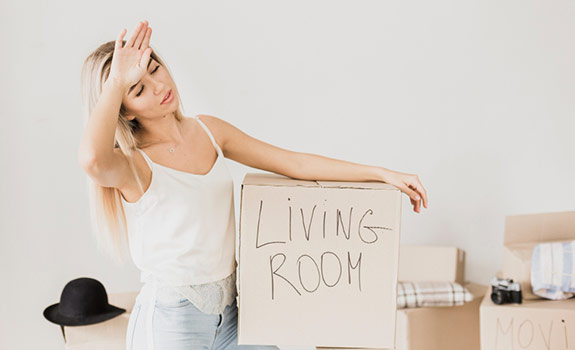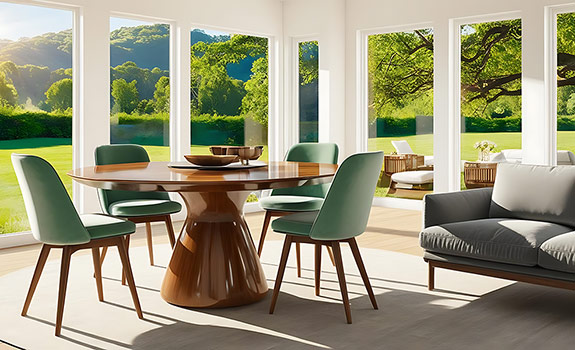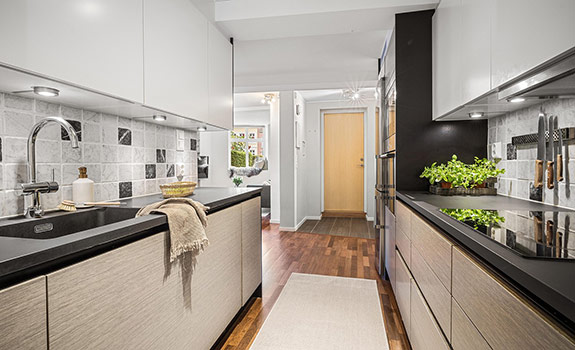Over the past couple of years, we’ve all spent more time in our homes than ever before. During the pandemic, our homes became pretty much the center of everything, including our work and social lives, as well as the spaces for relaxation and sleep. And, with so much time spent at home, it is natural that people become more interested in how their spaces look and feel.
Spending so much time behind the four walls of our homes has made many of us reconsider what we want from them, especially in terms of how we want to feel inside of them. If that’s your case as well, you’ve come to the right place to learn how to change a few things about your home and make it healthier.
Let’s explore these five interior design tips that will help you create a healthier space that promotes your overall wellbeing!

#1 Choose the Right Colors
Have you ever heard about the psychology of colors? If not, it’s about time you do because colors can have a significant impact on your overall wellbeing. So, according to the psychology of colors, certain colors have specific effects on our moods, perceptions, and emotions.
Colors are a very popular topic among interior design enthusiasts. They are often talked about as a way to make a room look bigger or smaller, a way to make a room more luminous or darker, and so on. However, the latest trends also focus on how the colors in our homes make us feel.
If you want a healthier home, you should also take this completely new approach to colors you use in your interior design projects, based on how they make you feel. For example, blue and green and colors that induce relaxation as they remind us of cool pools of water and an invigorating walk in the woods. Yellow is considered a healthy and happy color as it reminds us of sunshine and summer crops, and it is also a warm and sociable shade. Reds and oranges can also make your space healthier as they are stimulating colors that can remind you of berries, ripe fruits, or the warmth of a fire.
#2 Let There Be Light
Lighting is an essential aspect of interior design. And so it is for your own health.
Light is essential in how you appreciate your space. It not only connects to what time of the say it is, the season, and the landscape in your area. It also helps you balance your circadian rhythm, which can impact your mood and sleep quality. Besides that, proper lighting is also essential in protecting your eyes from strain.
Several studies have shown that exposure to natural light is extremely important for your health and immune system. It also boosts your mood and helps you relax. So, allow as much natural light as possible to come inside your home during the day. For the evening, make sure to have a complex lighting system that, besides general lighting, also includes accent lighting and task lighting. While accent lighting allows you to set the tone for a more relaxed mood, task lighting supports your eyes when you’re completing certain tasks such as cooking, reading, or whatever activity you may do late in the evening.
#3 Invite Nature In
After spending so much time inside, it’s clear that we all miss being outside and connecting with nature. Spending time in nature is well known as a strategy to relax and decrease your anxiety levels. But, bringing nature inside can have similar benefits as well for your health, plus others, including sharpening your attention, purifying the air, boosting productivity, and helping you recover from illnesses faster.
So, another interior design move you should make to create a healthier space is to invite nature inside your home. Add as many houseplants as possible in all rooms you spend most of your time in, including your home office, bedroom, and kitchen.
Once your home is shared with a couple of green friends, you’ll see that your mental wellbeing will improve significantly. You will feel calmer and more relaxed. Plus, you may also discover a new hobby for gardening that will give you an extra calming activity and a purpose for spending quality time at home.
#4 Design a Home Suitable for Your Health Conditions
A home is healthy only if it is functional for you. Looks matter, that’s for sure. But, what matters more is for your home to be an environment that works for your day to day life.
You may have certain physical or mental medical conditions that may require your home to have a certain look or certain additions. For example, if you are physically disabled and suffer from conditions like spinal cord injury, epilepsy, arthritis, or others, you may need some home modifications to make your life easier.
As the experts from MedicalNegligenceAssist explain, “Each physical disability, whether it occurred in an accident or a medical negligence case, requires different modifications for the victim to live in a functional home. Talk to a medical specialist you trust about your needs and ask advice for the right home renovations.”
#5 Design Your Bedroom into a Sleep Sanctuary
Poor quality sleep is a terrible thing that can seriously affect your overall well-being. Not getting enough sleep can lead to a number of mental and physical health issues, including anxiety, depression, increased blood pressure, increased risk of heart attack, unhealthy weight gain, and many others. So, you need to design a bedroom that really prioritizes and promotes sleep.
You should aim to create a soft, warm, and inviting place where your mind and body can really switch off. You should avoid busy patterns and very bright colors as they can be disturbing and distracting. You should also keep devices and other such distractions away from the bedroom. As for lighting, it would be best to choose a soft, gentle light for the bedroom.
Conclusion
In summary, the increased time spent within our homes has underscored the importance of creating living spaces that prioritize our health and well-being. By incorporating elements such as soothing colors, optimal lighting, natural elements, personalized design for individual health needs, and sleep-friendly environments, we can transform our homes into havens that nurture both body and mind. As we continue to adapt to changing circumstances, let our homes serve not just as shelters, but as sanctuaries that promote and sustain our overall wellbeing, providing comfort, rejuvenation, and a sense of sanctuary amidst the chaos of the world.
Published in: Home advice | Author: Bogdan







